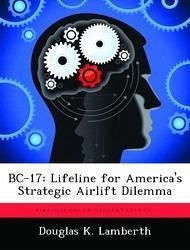The Civil Reserve Air Fleet (CRAF) is the heart of the nation's strategic airlift capability. In the words of General Norton A. Schwartz, Commander of United States Transportation Command (USTRANSCOM) in his March 2007 address to the House Armed Services Committee, "A critical partner in our nation's ability to project and sustain forces is a viable Civil Reserve Air Fleet". It supplements Air Mobility Command's organic airlift force, which is insufficient in and of itself to meet the airlift needs of the combatant commanders during contingencies while satisfying its normal peacetime commitments. Capable of providing over 90 percent of troop-carrying capability, over 40 percent of cargo-carrying capability, and 100 percent of aeromedical evacuation capability, America's heavy reliance on the commercial airline industry is reflected in the National Security Decision Directive (NSDD) 280 and Joint Staff war plans. An inherent shortfall of the CRAF, however, is that of the 1,364 aircraft enrolled in the program (as of May 2007), none have the ability to carry outsized cargo. In fact, there are very few aircraft in the world with this capability. The only two within the US are the C-17 and C-5, both purely military platforms. Considering oversized and outsized equipment amounted to 85 percent of the cargo carried during the first Gulf War, the projected closure of C-17 production, C-5 modernization problems, and the Air Force' heavy reliance on the CRAF during contingencies, it is a very real concern for Pentagon officials in managing America's future strategic airlift force.
Hinweis: Dieser Artikel kann nur an eine deutsche Lieferadresse ausgeliefert werden.
Hinweis: Dieser Artikel kann nur an eine deutsche Lieferadresse ausgeliefert werden.








